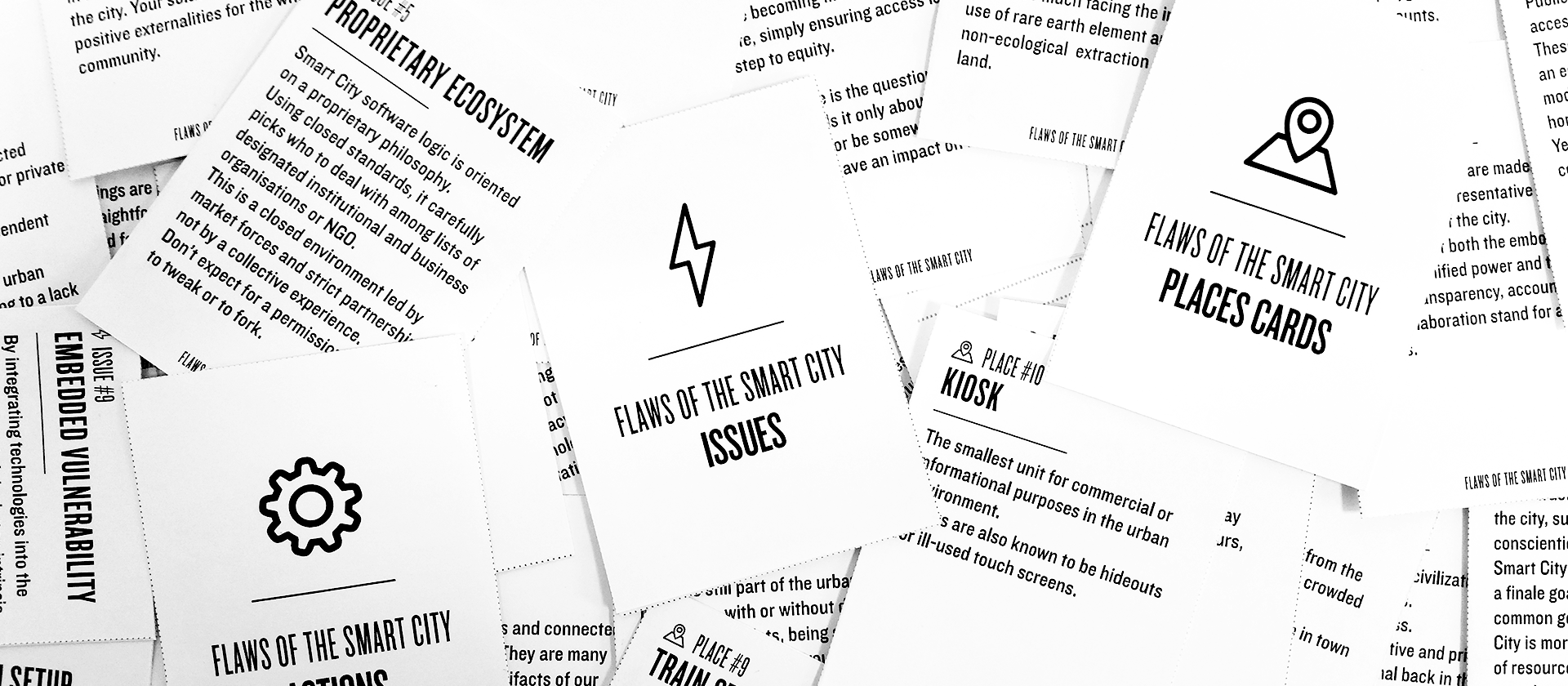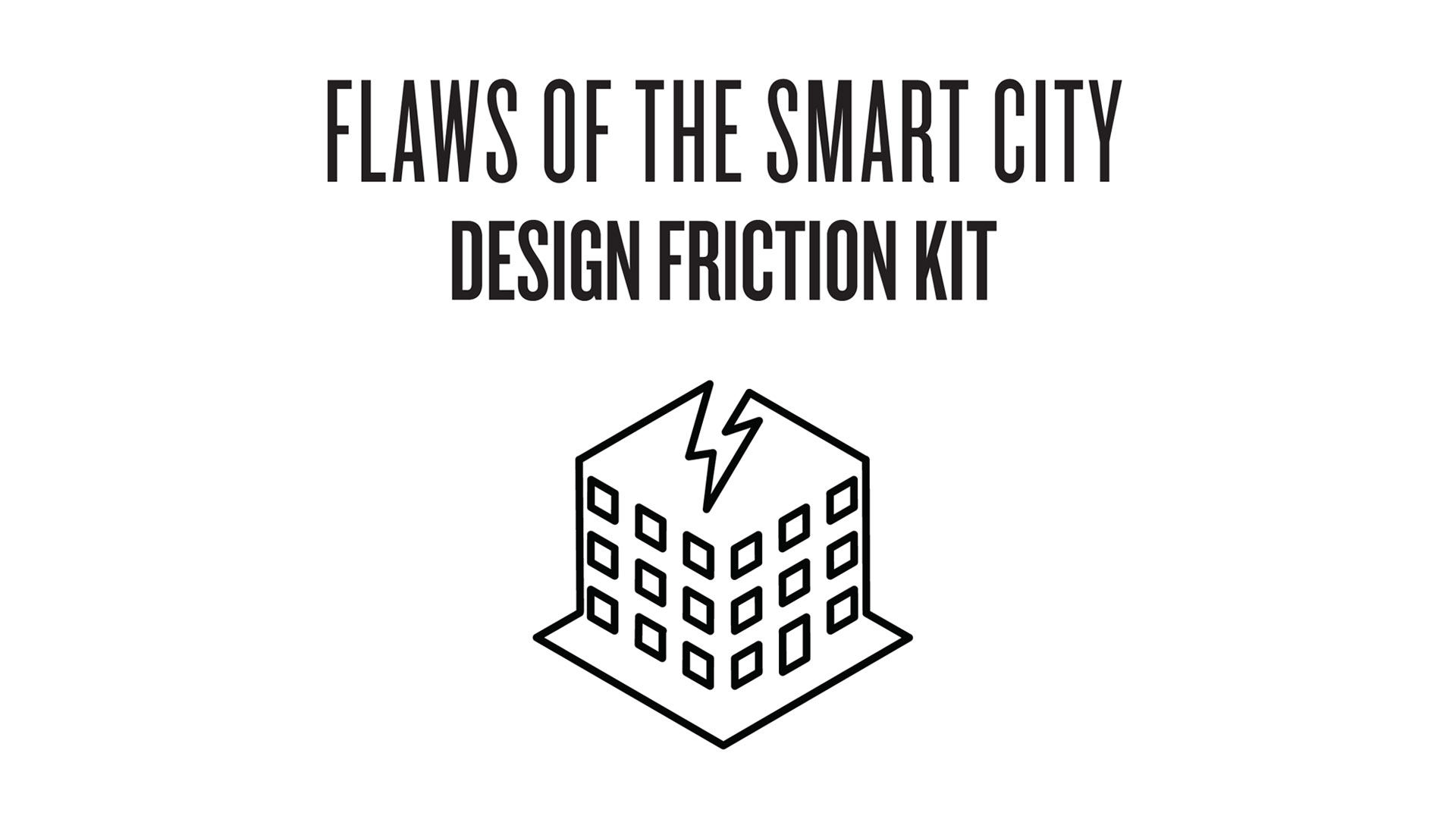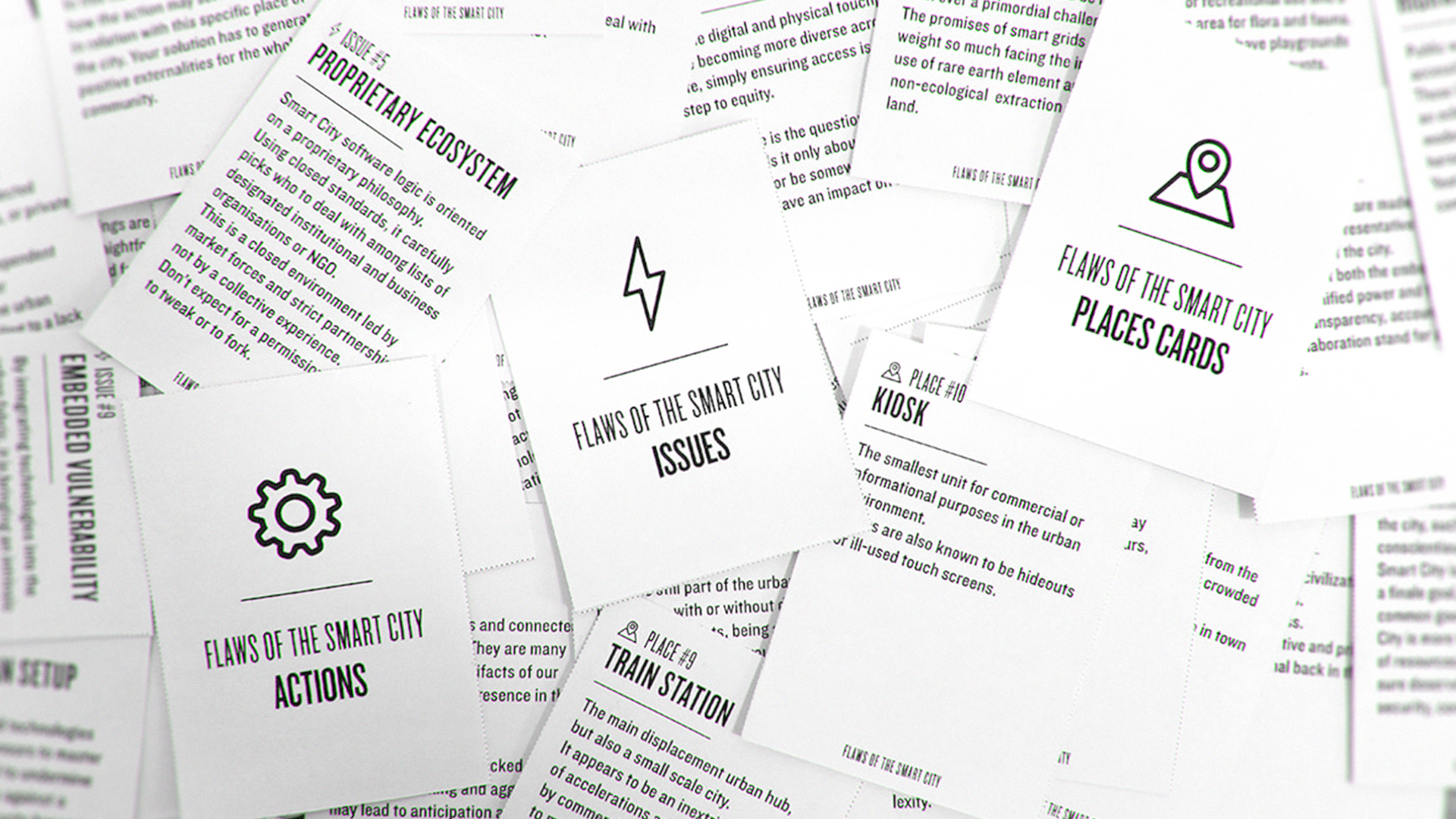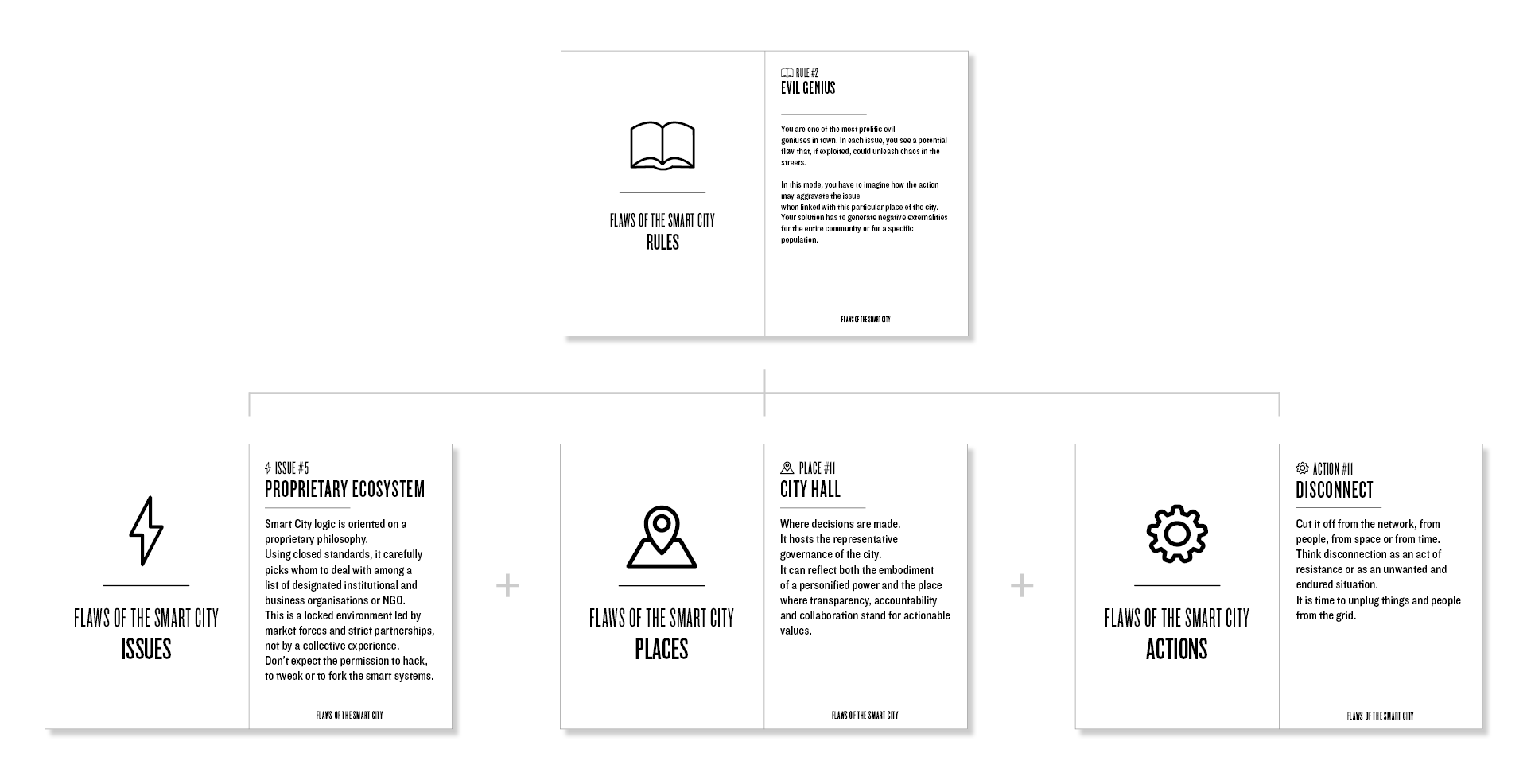
Flaws of the Smart City
A game kit to reveal and question the unspoken truths of the smart city
Like any other hardware or software, connected cities have a number of flaws. Fictionally speaking, Flaws of the Smart City proposes either to repair these weaknesses or, on the contrary, to exploit them to unleash chaos.
This game kit aims to reveal the paradoxes of so-called smart cities by shedding light on their hidden aspects. It is in these grey areas that the frictions and controversies of connected urban technologies reside, which are often absent from their marketing pitches: the loss of public control to private operators, new vulnerabilities endangering users of connected streets, the disappearance of anonymity once offered by urban spaces, and the lure of greenwashing or heightened security measures.
Available as a print-and-play format (to be printed and assembled at home), Flaws of the Smart City is designed to facilitate collaborative workshops for those involved in shaping cities and managing these new urban ambiguities. Whether they are urban planners or architects, public officials or decision-makers, students or engaged citizen collectives, Flaws of the Smart City intends to help these stakeholders co-create critical futures scenarios, moving away from purely technological applications of the smart city to focus on its ethical implications.


Flaws of the Smart City draws inspiration from the work of Adam Greenfield, Anthony Townsend, Dan Hill, and Antoine Picon, critical thinkers of the smart city. The kit makes these reflections tangible through a set of cards that combine connected infrastructure flaws with key locations in each city and specific actions. Mixing these three elements is the first step towards speculating on scenarios that explore both positive and negative outcomes, shaping our experience of smart cities.
Players take on the role of either the Guardian Angel or the Evil Genius to consider the interdependencies, conceptual flaws, technical vulnerabilities, and social dilemmas faced by our increasingly urban and connected societies.
Open to translation, the kit has been adapted into several languages and localised for different countries with diverse smart city cultures.

